
It's January 14th. Share your blessings with somebody today. Seriously, don't just think about it for a moment......do it now.
Scroll down and enjoy the latest comprehensive weather to the max. The real Winter weather is coming up later this month!!!
Here are the latest hazards across the country. Frigid weather on the way for the 2nd half of January-lots of snow:
Purple/Pink/blue on land is cold/Winter weather. Brown is wind, Green is flooding. Gray is fog. Reddish is a red flag advisory.
Go to the link below, then hit the location/county on the map for details.
https://www.spc.noaa.gov/ Go to "hazards"



Winter Weather
https://www.wpc.ncep.noaa.gov/wwd/winter_wx.shtml
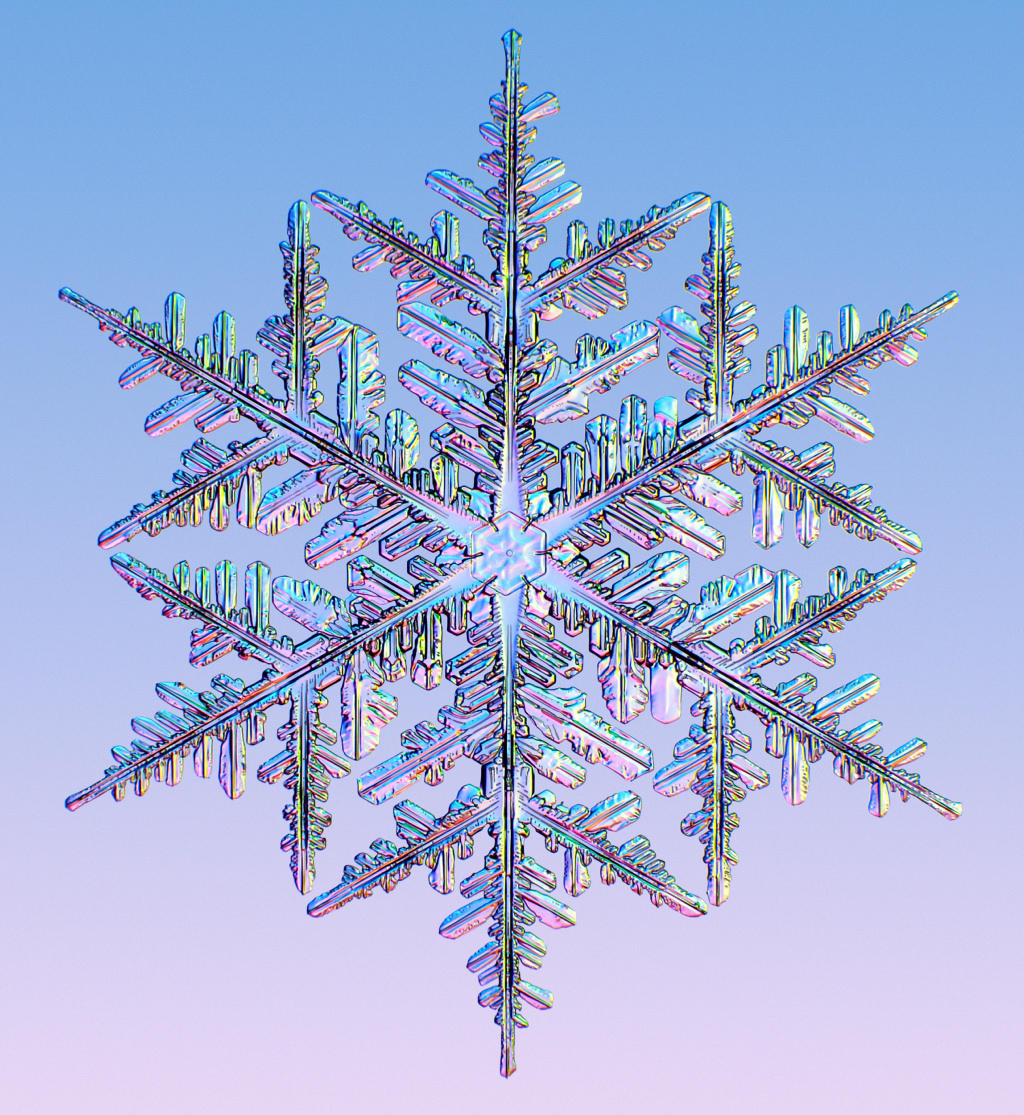
Snowfall the next day:
Forecast Hour: 024
Image URL: http://mag.ncep.noaa.gov/data/nam/12/nam_namer_024_snodpth_chng.gif
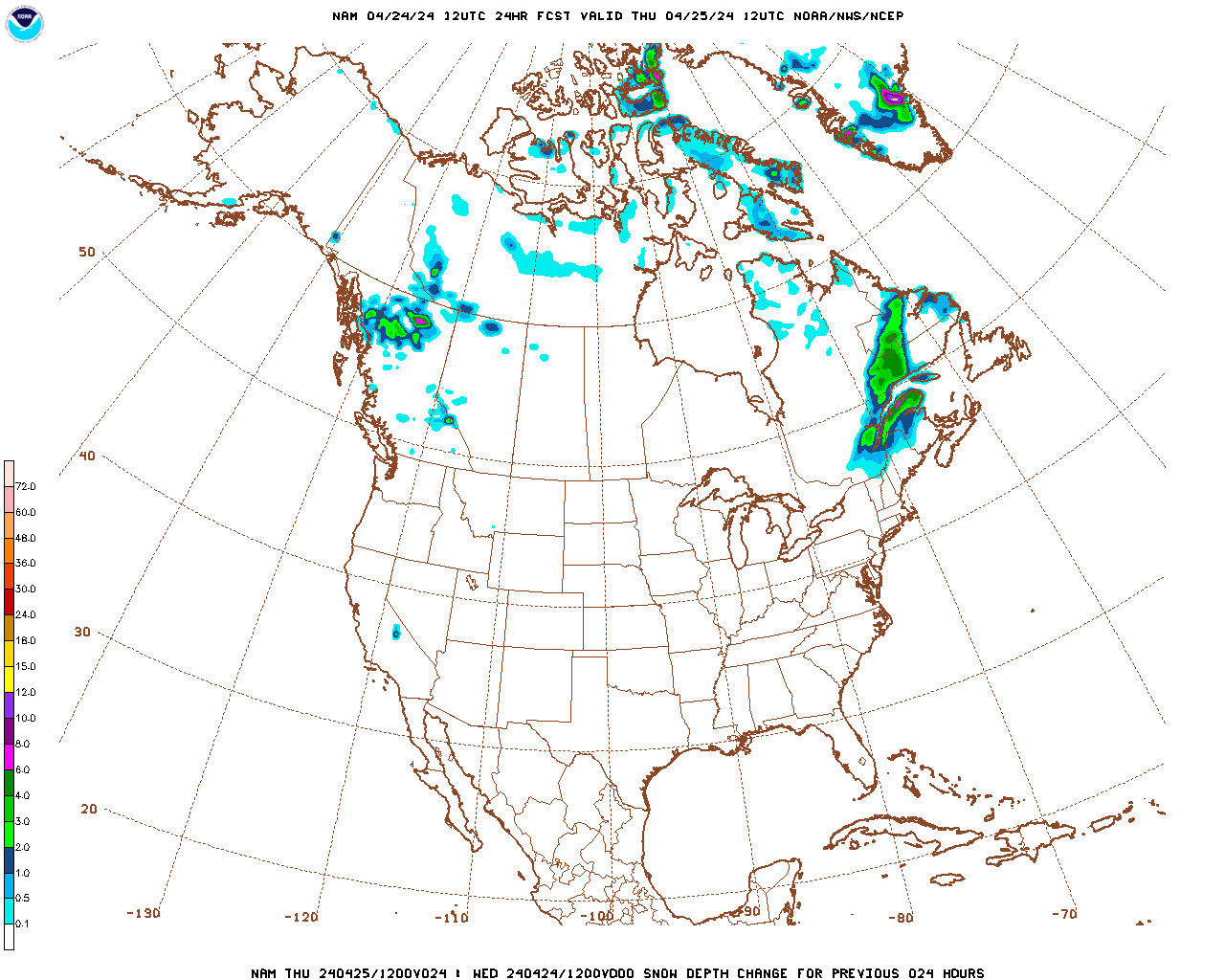
| Low Temperatures Tomorrow Morning |

High Temperatures today and tomorrow.
Seasonal



Highs for days 3-7:
The cold blasts begin, starting NorthCentral!!!! The frigid Arctic air will spread southeast late in the week.
This will define the weather in week 2!
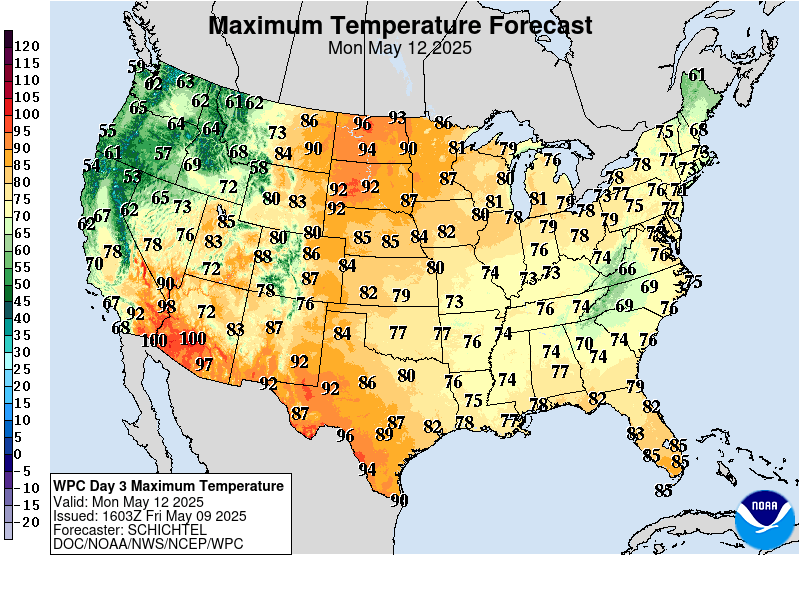
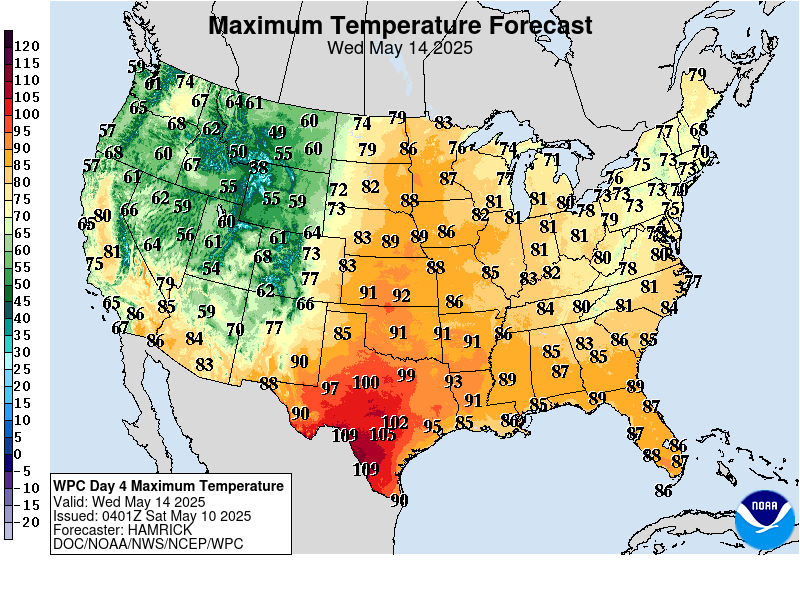
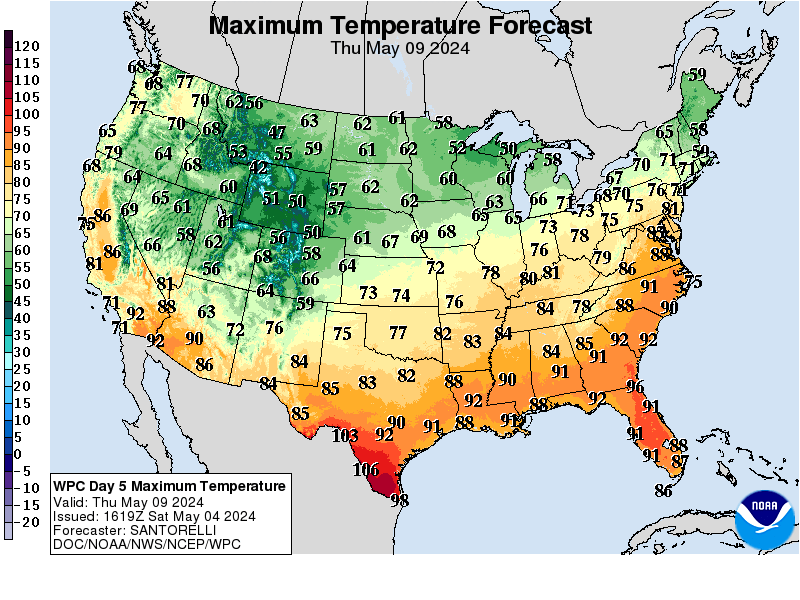
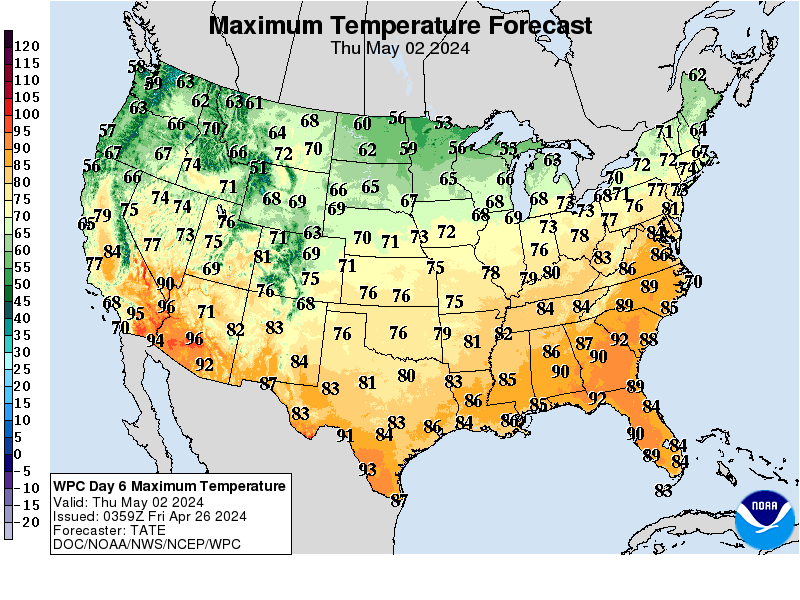
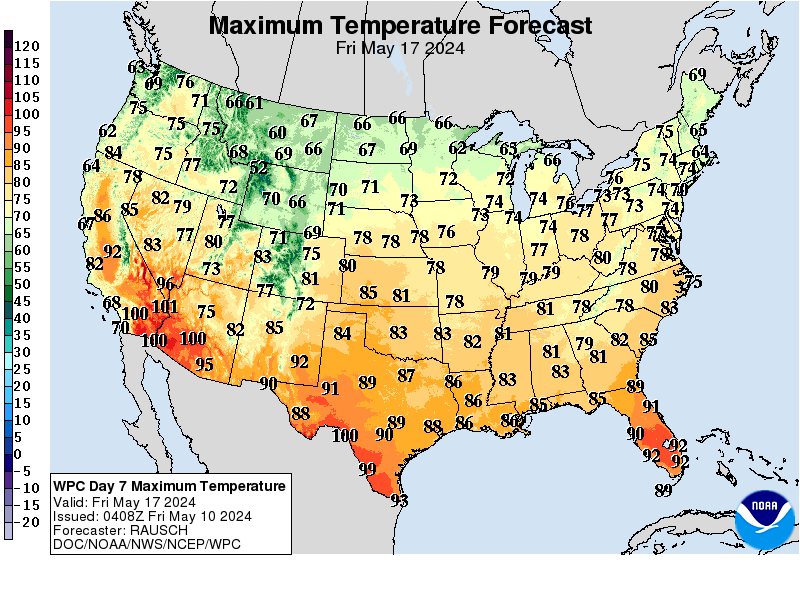
How do these days 3-7 temperatures compare to average at this time of year?
Bitter cold heads south out of Canada in the N.Plains/Upper Midwest.........then pours southeast and turns the reds into blues late in the week.
The real cold is after this period.
https://www.wpc.ncep.noaa.gov/medr/medr_mean.shtml
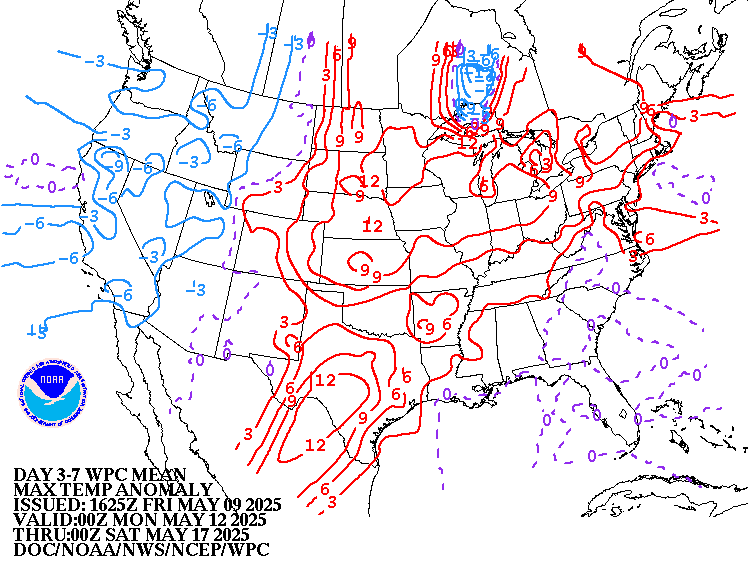
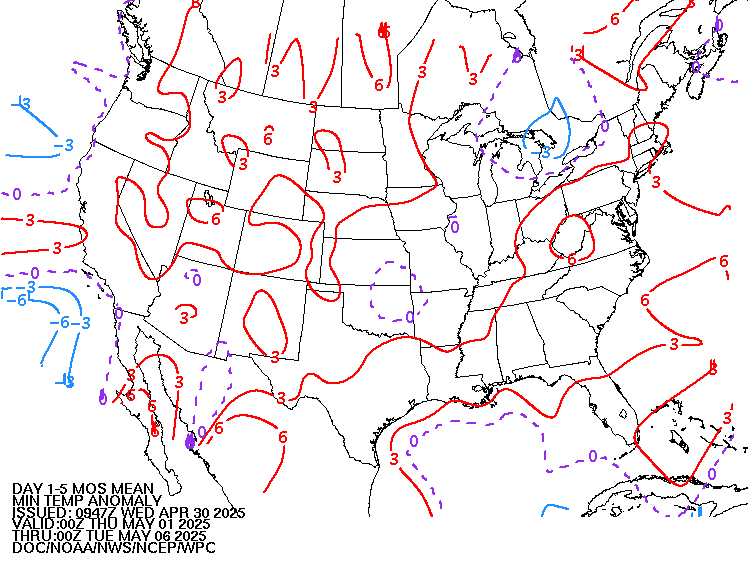
Weather maps for days 3-7 below:
Arctic blast in the North, with a reinforcement that takes it farther southeast. Southern stream storm in the South......how and where will it phase with the northern stream? How much snow and where?
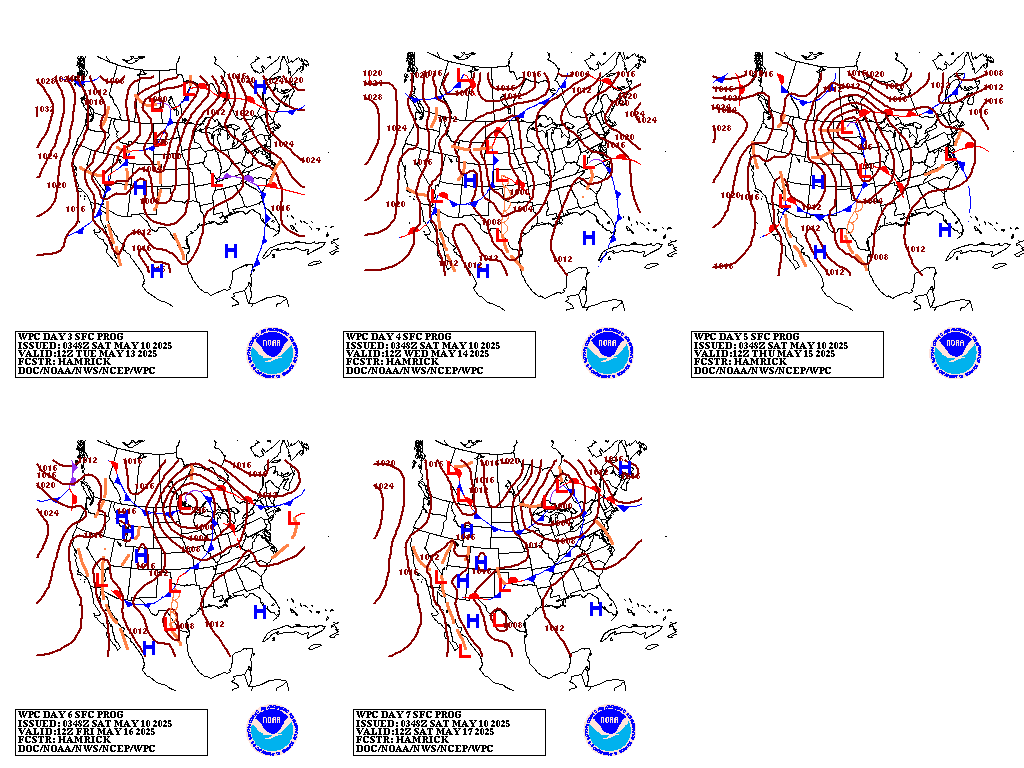
The latest liquid equivalent precip forecasts for this week are below.
Dry the next couple of days..........then things turn very active.
Day 1 below:
http://www.wpc.ncep.noaa.gov/qpf/fill_94qwbg.gif?1526306199054
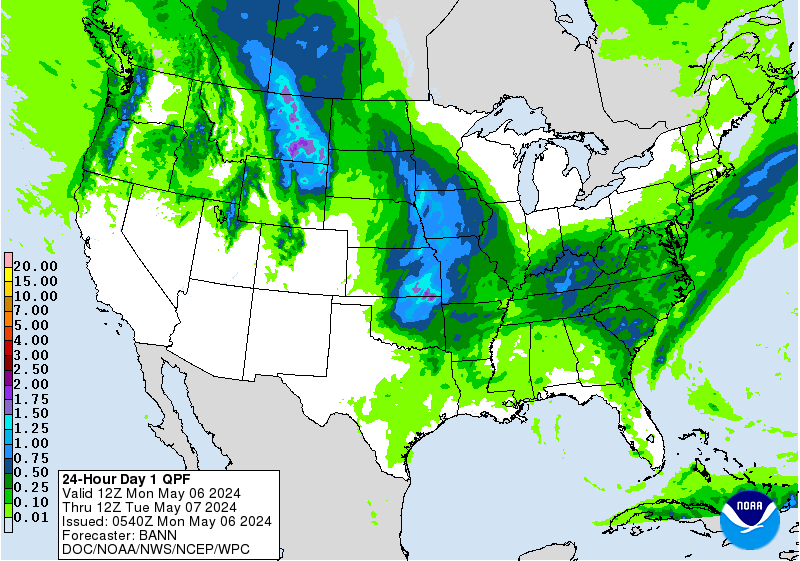
Day 2 below:
http://www.wpc.ncep.noaa.gov/qpf/fill_98qwbg.gif?1528293750112
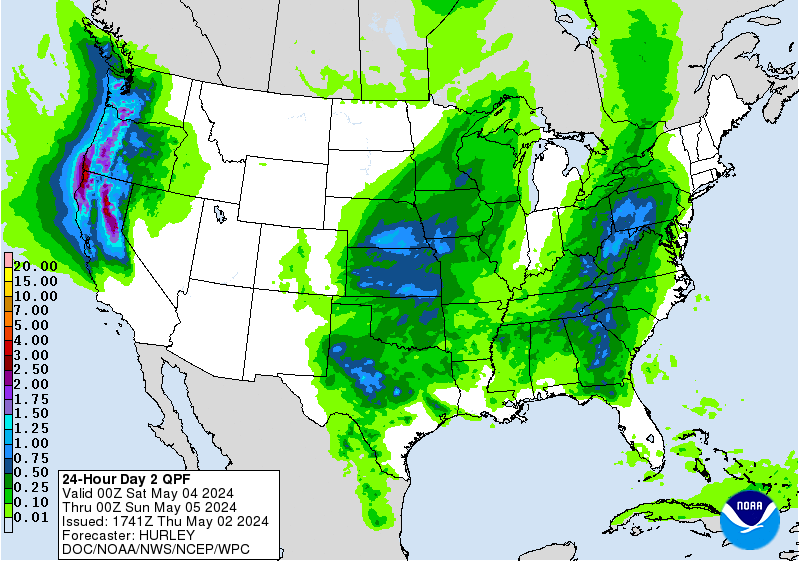
Day 3 below
http://www.wpc.ncep.noaa.gov/qpf/fill_99qwbg.gif?1528293842764
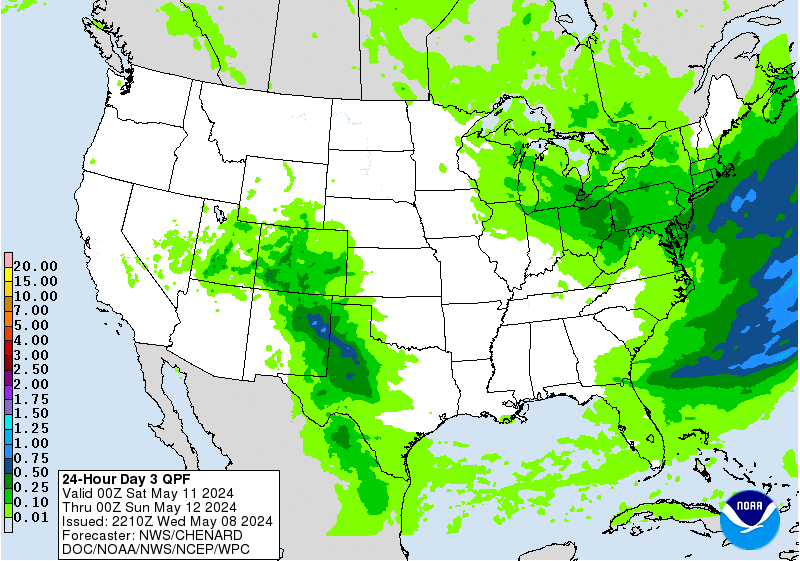
Days 4-5 below:
http://www.wpc.ncep.noaa.gov/qpf/95ep48iwbg_fill.gif?1526306162
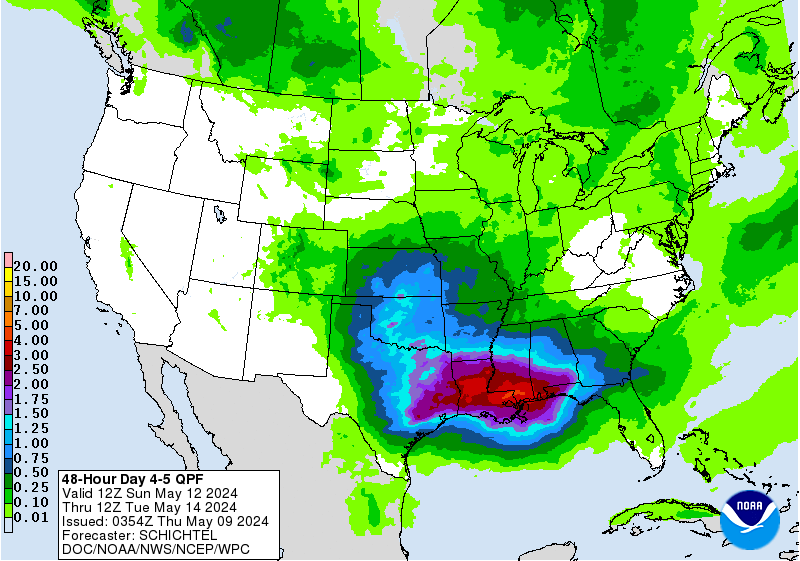
Days 6-7 below:
http://www.wpc.ncep.noaa.gov/qpf/97ep48iwbg_fill.gif?1526306162
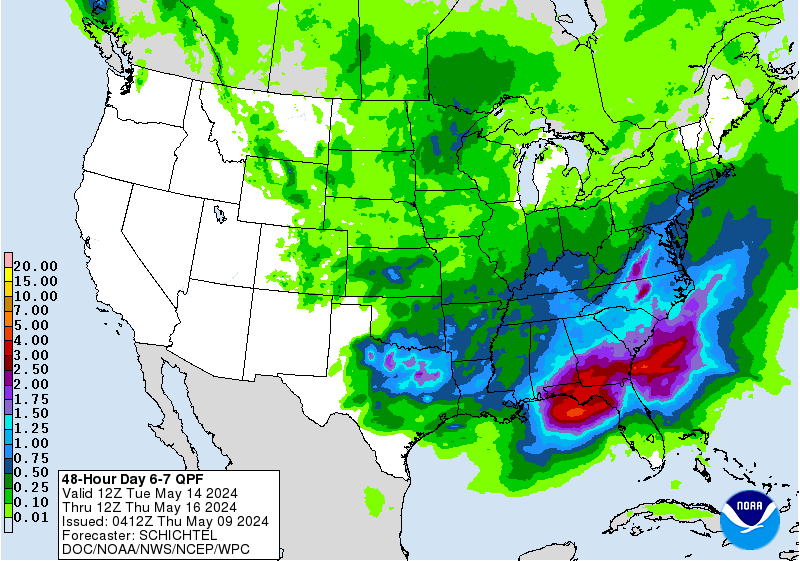
7 Day Total precipitation below:
http://www.wpc.ncep.noaa.govcdx /qpf/p168i.gif?1530796126
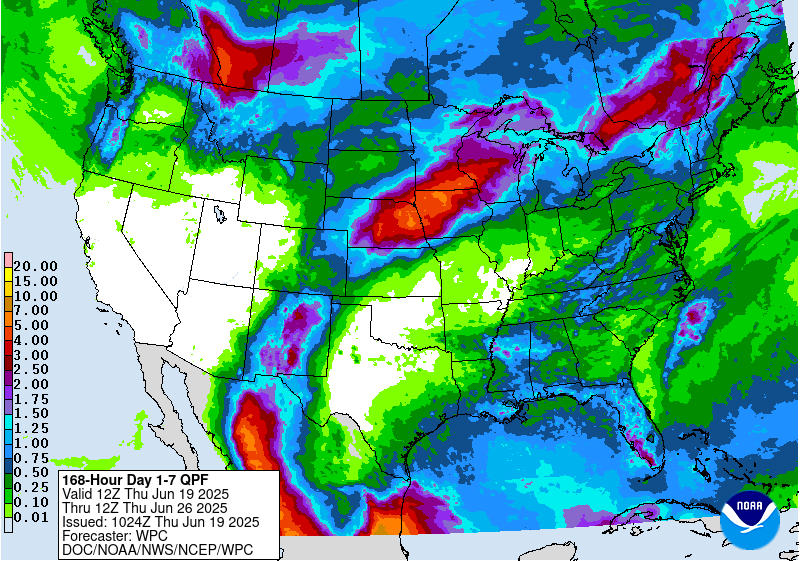
Current Dew Points
Pretty dry air in place across much of the country.

Latest radar loop
http://www.nws.noaa.gov/radar_tab.php

| Full resolution version loop (3400x1700 pixels - 2.2mb) |

Go to: Most Recent Image
Precipitation the past 24 hours
![]()
You can go to this link to see precipitation totals from recent time periods:
https://water.weather.gov/precip/
Go to precipitation, then scroll down to pick a time frame. Hit states to get the borders to see locations better. Under products, you can hit "observed" or "Percent of normal"
+++++++++++++++++++++++++++++++++++++++++++++++
Soil moisture anomaly:
Still wet on this particular metric in an enormous area.
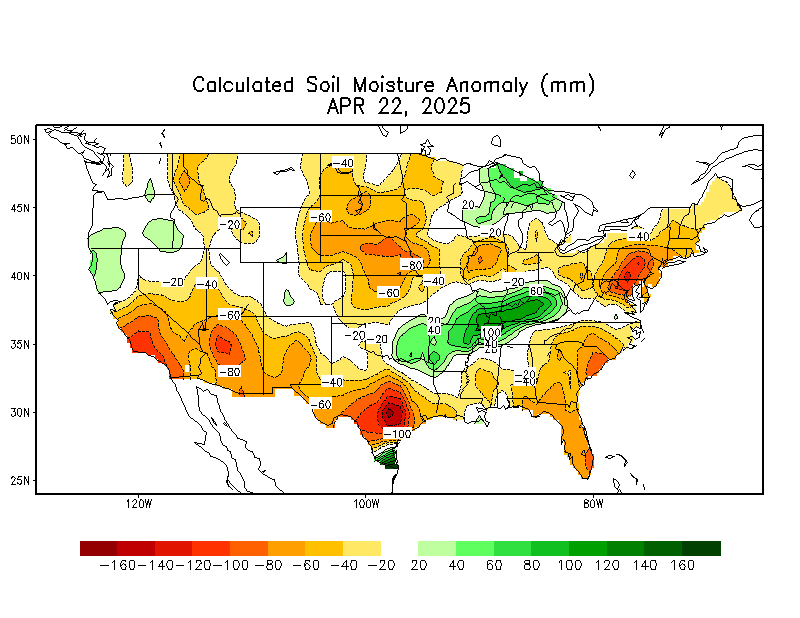
+++++++++++++++++++++++++++++++++++++
Precipitation compared to average for the last 7, 14, 30 and 60 days.
Usually not updated for previous day until late the next day.
https://www.atmos.illinois.edu/~snodgrss/Ag_Wx.html




The top map is the Canadian ensemble average, the maps below are the individual members that make up the average
End of week 2....................0 ensembles from MONDAY:
Analysis starting from 6 days ago, ending with today:
Tuesday: Coldest yet. Cross polar flow. Polar vortex displaced south.
Wednesday: Same pattern but not as cold as the last 2 days.
Thursday: Still the same very cold pattern, a tad colder than yesterday.
Friday: Still the same very cold pattern with everything above applying. Polar vortex displaced south with cross polar flow and very northern stream dominant, which penetrates deeply across the US/Canadian border. Ridge West/Trough Midwest/East couplet.
Saturday: Not quite as amplified on the ensemble mean/average because a few members undercut the northern stream with Pacific flow.
Sunday: Very similar to yesterday. With pretty strong agreement outside of a few solutions that try to undercut the cold/deflect the northern stream back towards Canada. These are upper level maps. Dense, bitter cold at the surface coming south with Arctic high pressure will be hard to stop.......even when the pattern shifts in the upper levels.
Monday: Same as yesterday.
++++++++++++++++++++++++++++++++++++++++++++++++++++++++++++++
Each member is like the parent, Canadian model operational model.......with a slight tweek/variation in parameters. Since we know the equations to represent the physics of the atmosphere in the models are not perfect, its useful to vary some of the equations that are uncertain(can make a difference) to see if it effects the outcome and how.
The average of all these variations(ensembles) often yields a better tool for forecasting. It's always more consistent. The individual operational model, like each individual ensemble member can vary greatly from run to run.........and represent an extreme end of the spectrum at times. The ensemble average of all the members, because it averages the extremes.............from opposite ends of the spectrum.........changes much less from run to run.
360h GZ 500 forecast valid on Jan 29, 2019 00 UTC
0Z GFS Ensembles at 2 weeks:
Analysis, starting with a week ago:
Tuesday: Similar to yesterday. Ridge west, trough east couplet. Cold focused on the Northeast.
Wednesday: Same pattern but not quite as cold.
Thursday: Very cold with cold aimed a bit farther west on some solutions, more towards the Midwest vs Northeast vs yesterday.
Friday/Today: Extreme cold pattern. Ridge West/Trough East transports frigid air from high latitudes deeply south of US border..........similar agreement to Canadian ensembles above.
Saturday/Today: Same as yesterday. Almost universal agreement vs the Canadian model ensembles, now having a minority with undercutting southern stream. The European model ensembles agreed with this too.
Sunday: This particular set of solutions was the coldest yet of any model for any time frame. A couple members had the center of the polar vortex into the Midwest which would be extraordinarily rare and likely too extreme. The 6z and 12z runs were not as extreme at this particular time frame but all of them advertise sustained frigid weather for much of the country during week 2 and possibly beyond.
Monday: Similar to yesterday.

Latest, updated graph/forecast for AO and NAO here, including an explanation of how to interpret them.
Previous analysis, with the latest day at the bottom for late week 2 period.
Tuesday: AO really dives lower at the end of week 2, almost to record low levels. This favors extreme cold traveling from north/high latitudes to south/mid latitudes. NAO is close to zero. PNA is slightly positive.
Wednesday: AO still plunges during week 2, favorable for cold to move from north to south in Canada into the US. NAO close to zero, NAO slightly positive.
Thursday: AO still negative(favorable for extreme cold to move south) but not a low as recent solutions, with a couple of exceptions. NAO goes from a bit positive to slightly negative at the end of the period. PNA slightly positive.
Friday: AO now extremely negative, to the bottom of the graph negative on some solutions. Strongly favors bitter cold moving from high to middle latitudes. NAO more negative than the last few days............helps push the cold into the US, especially Midwest/East. PNA a bit positive.........also helps cold pattern.
Saturday: AO still negative but not as extreme. NAO close to zero, leaning negative late. PNA modestly positive. Still strongly favors cold, just quite as extreme as yesterday.
Sunday: AO slightly more negative with a few in record, absolute bottom of the graph negative(from the 0z run). This greatly favors cold transport from high to mid latitudes. NAO drifts lower to slightly negative(favors cold to penetrate south into the US) and PNA a bit positive......helps air masses in the Midwest/East to have a north to south movement.
Monday: Very negative AO. NAO a bit more negative today. PNA slightly positive.
The link below, now has the PNA index added at the bottom:
National Weather Service 6-10 day, 8-14 day outlooks.
Previous few days: The 6-10 and 8-14 day outlooks should continue to get much colder...........and colder!!
This has been happening. Now we just ascertain HOW cold and where the coldest weather will be.........and the heaviest snows.
Monday: Same things continuing.
Temperature Probability | |
Precipitation Probability | |
| the 8-14 day outlooks ArchivesAnalogsLines-Only FormatGIS Data | |
Temperature Probability | |
 | |
Previous post:
Re: Re: Re: Re: Weather Sunday
By metmike - Jan. 14, 2019, 12:55 a.m.
0z GFS operational model is milder, then towards the end of week 2 it has the most extreme cold of the Winter hitting.
Similar scenario for the 0Z ensembles but not as extreme.
0z Canadian ensembles pretty similar to the previous runs.
The last GFS was almost as cold of a solution that can be possible.
However, the 12z Canadian ensembles, seen below have take a huge milder turn with almost half the members now undercutting the northern stream with milder zonal Pacific flow at the end of week 2, instead of amplifying the extreme cold pattern as has been the case for most of the last week, when we progress into this period.
360h GZ 500 forecast valid on Jan 29, 2019 12UTC
The 12z GFS ensembles look to be following the parent operational model and amplifying the cold pattern as week 2 progresses.
At this point, it seems almost impossible for the coldest models to come out any colder in week 2.
This was the mind boggling cold solution on the 12z GFS ensembles at the end of week 2:
Forecast Hour: 360
Image URL: http://mag.ncep.noaa.gov/data/gefs-mean-sprd/12/gefs-mean-sprd_namer_360_500_vort_ht.gif

Forecast Hour: 360
Image URL: http://mag.ncep.noaa.gov/data/gefs-mean-sprd/12/gefs-mean-sprd_namer_360_850_temp.gif
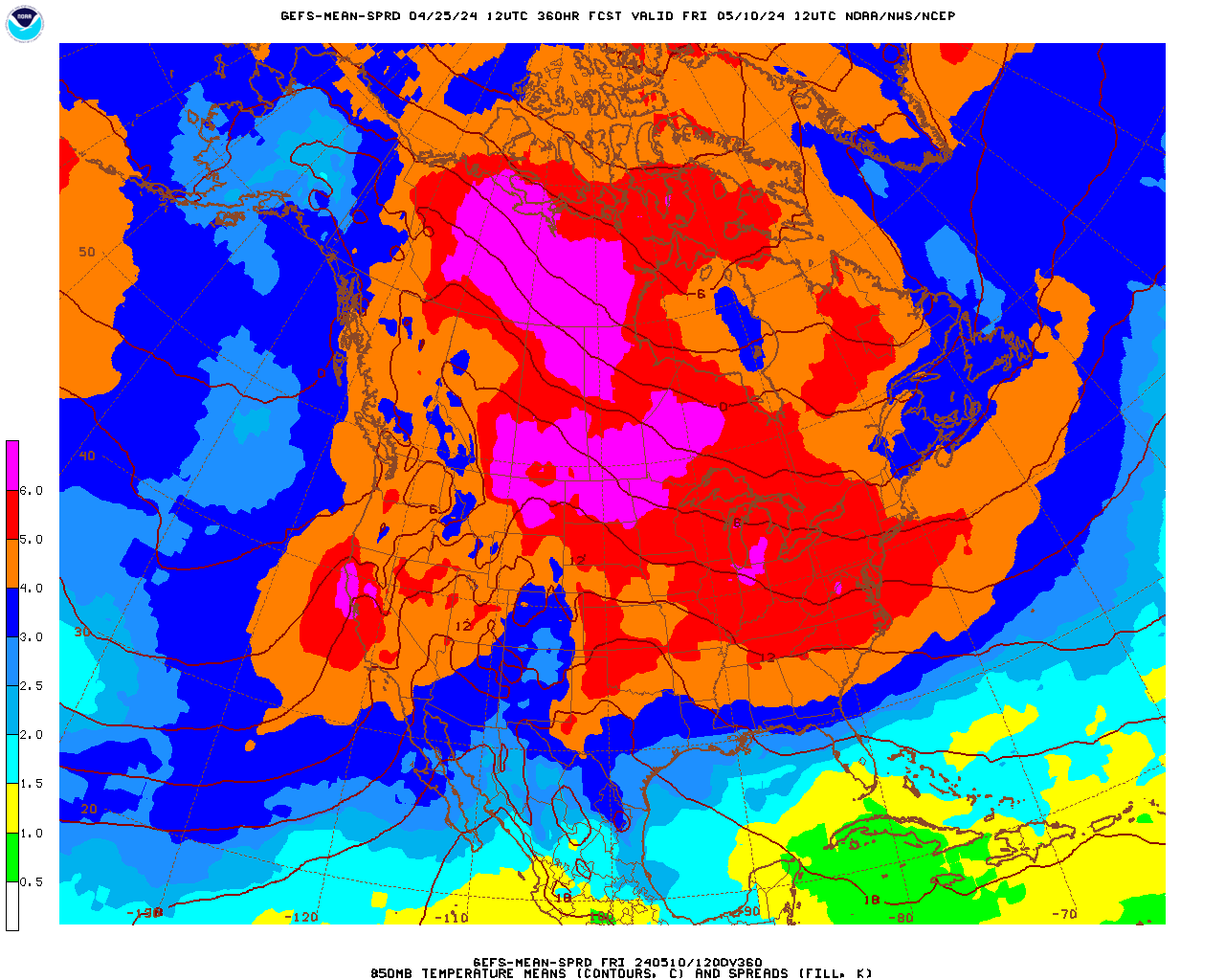
These were the individual ensembles for the GFS 12z run. WOW! on a couple of them.
